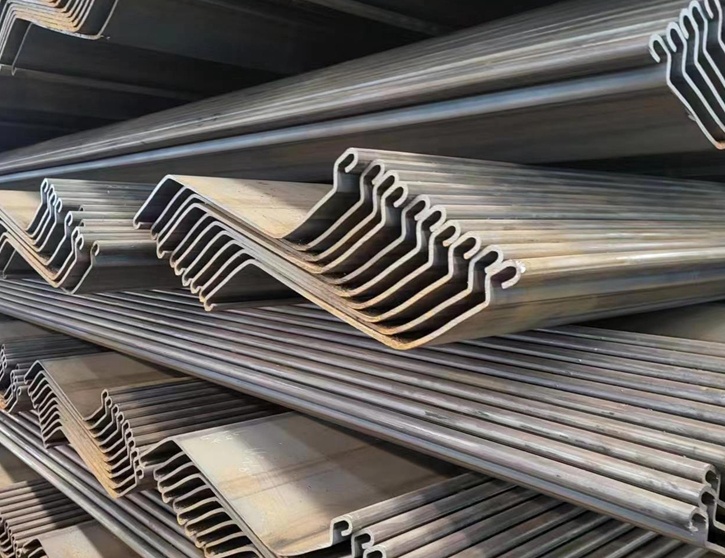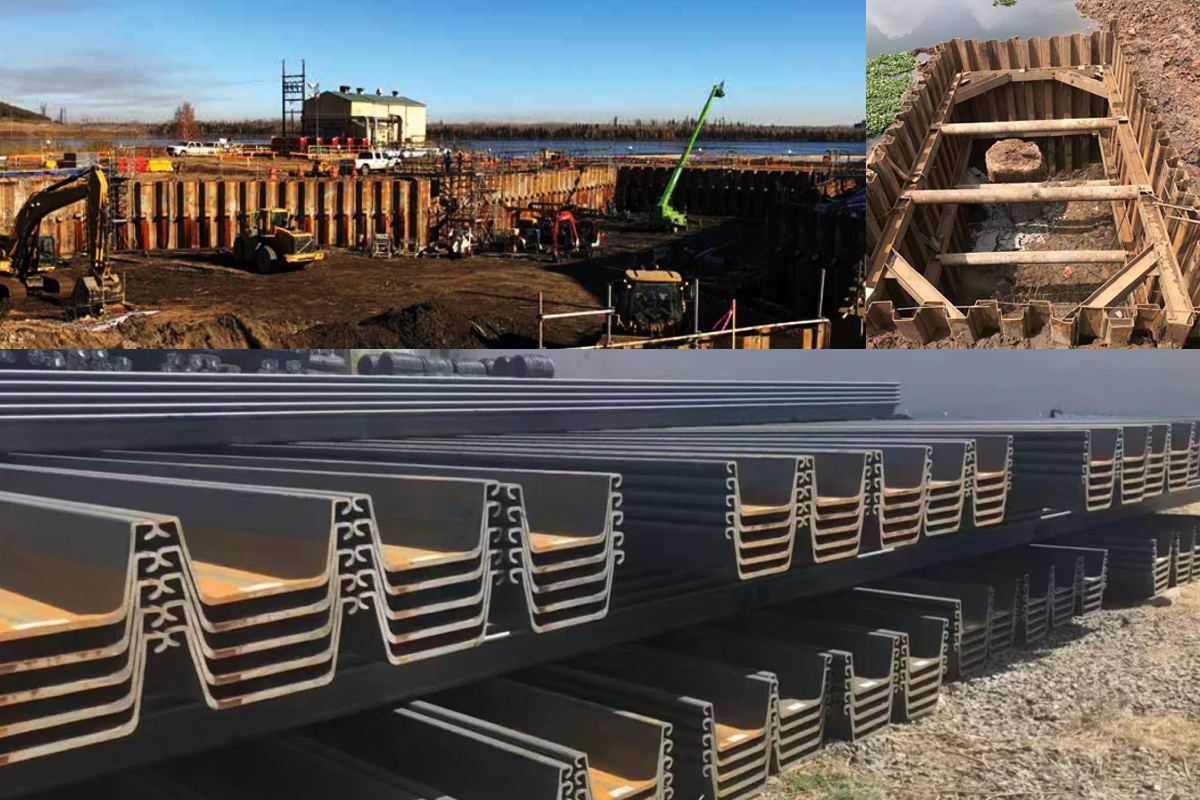Steel Sheet Pile
According to the production process, steel sheet pile products are divided into two types: cold-bent thin-walled steel sheet piles and hot-rolled steel sheet piles.
(1) Cold-bent steel sheet piles are divided into two types: non-bite cold-bent steel sheet piles (also called channel plates) and bite-type cold-bent steel sheet piles (divided into L-type, S-type, U-type, and Z-type). Production process: Thinner plates (commonly used thickness 8mm to 14mm) are continuously rolled and formed in a cold-bending unit. Advantages: Low investment in production lines, low production costs, and flexible product length control. Disadvantages: The thickness of each part of the pile body is the same, the cross-sectional dimensions cannot be optimized, resulting in increased steel consumption, the shape of the locking part is difficult to control, the joints are not tightly buckled and cannot stop water, and the pile body is prone to tearing during use.
(2) Hot-rolled steel sheet piles There are several major categories of hot-rolled steel sheet piles in the world, including U-type, Z-type, AS-type, H-type, and dozens of specifications. The production, processing, and installation processes of Z-type and AS-type steel sheet piles are relatively complex, and they are mainly used in Europe and the United States; in China, U-type steel sheet piles are mainly used. Production process: It is formed by high-temperature rolling by a steel rolling mill. Advantages: standardized size, superior performance, reasonable cross-section, high quality, and tight water-proofing with lock bite. Disadvantages: high technical difficulty, high production cost, and inflexible specification series.

U-shaped steel sheet pile
Basic introduction
1. The cross-sectional structure design of the WR series steel sheet pile is reasonable, and the forming process technology is advanced, which makes the ratio of the cross-sectional modulus to weight of the steel sheet pile products continue to increase, so that it can obtain good economic benefits in application, and broaden the application field of cold-bent steel sheet piles.
2. WRU type steel sheet piles have rich specifications and models.
3. Designed and produced according to European standards, the symmetrical structure is conducive to reuse, which is equivalent to hot rolling in reuse, and has a certain angle range, which is convenient for correcting construction deviations;
4. The use of high-strength steel and advanced production equipment ensure the performance of cold-bent steel sheet piles;
5. The length can be specially customized according to customer requirements, which brings great convenience to construction and reduces costs.
6. Due to the convenience of production, it can be pre-ordered before leaving the factory when used with combined piles.
7. The production design and production cycle are short, and the performance of steel sheet piles can be determined according to customer requirements.
Advantages:
1) U-shaped steel sheet piles are available in a variety of specifications and models.
2) Designed and produced according to European standards, the structure is symmetrical, which is conducive to reuse and is equivalent to hot rolling in terms of reuse.
3) The length can be customized according to customer requirements, which brings great convenience to construction and reduces costs.
4) Due to the convenience of production, it can be pre-ordered before leaving the factory when used with combined piles.
5) The production design and production cycle are short, and the performance of steel sheet piles can be determined according to customer requirements.

Z-shaped steel sheet piles
The locks are symmetrically distributed on both sides of the neutral axis, and the web is continuous, which greatly improves the section modulus and bending stiffness, ensuring that the mechanical properties of the section can be fully utilized. Because of its unique cross-sectional shape and reliable Larssen lock.
Advantages of Z-type steel sheet piles:
1. Flexible design, with relatively high section modulus and mass ratio;
2. Higher moment of inertia, thereby increasing the stiffness of the sheet pile wall and reducing displacement deformation;
3. Large width, effectively saving the time of hoisting and piling;
4. The increased section width reduces the number of shrinkages in the sheet pile wall, directly improving its water-stopping performance;
5. Thickening treatment is carried out in the severely corroded parts, and the corrosion resistance is more excellent
Post time: Jan-10-2025